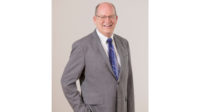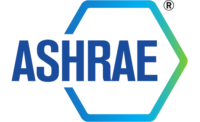Every successful project starts with a framework. A vision statement. A blueprint.
The editors of Engineered Systems are proud to present The Blueprint — a monthly Q&A interview with HVACR engineering’s leading voices. These one-on-one discussions will examine the trade’s history, current industry trends, the factors shaping the sector’s future, and more.
Troy Byers, TBE, CxA, is the founder/partner of Commissioning Consultants, member of the Associated Air Balance Council (AABC), president of the AABC Commissioning Group (ACG), and a member of the ASHRAE Epidemic Task Force. Recently, Byers sat down with Engineered Systems editor-in-chief, Herb Woerpel, to discuss the role of testing, adjusting, and balancing in the COVID-19 era; his participation in so many different organizations; the effectiveness of ASHRAE’s Building Readiness Guide; and more.
Engineered Systems: Troy, thanks for your time. Could you please introduce yourself to our audience?
Troy Byers: Thank you for having me. I look forward to sharing my perspective on the role of commissioning; energy management; and testing, adjusting, and balancing (TAB) within the context of COVID and the built environment.
Engineered Systems: Tell us about the ACG, your role in the organization, and its role in the built environment?
Byers: I became a member of AABC as a test and balance engineer in 2000, charter member of the ACG in 2004, and started Commissioning Consultants in 2009. Our primary market is in the Southeastern and mid-Atlantic states.
ACG’s board of directors recently completed a strategic planning session (virtually), which resulted in some definable goals for the next three years and also a defined mission statement, which really answers the question best. (Mission: ACG promotes independent, third-party, total building commissioning, and energy management services by providing members with industry leading certification, technical guidelines, education, training, advocacy, and networking opportunities.)
ACG, and by extension its membership, benefits greatly through its affiliation with the AABC and the Energy Management Association (EMA). The three are known collectively as the “Authorities in Building Performance.” It’s a unique alliance that allows promotion of a collaborative approach with the built environment.
The allied trade associations administer certifications covering TAB and energy management. Collectively, these groups have more than 600 member companies with more than 2,600 professionals carrying one or more of AABC, ACG, and EMA’s certifications.
Engineered Systems: Finally, with all that left over free time (haha), you are a member of the ASHRAE Epidemic Task Force — one of the engineering community’s guiding voices throughout the COVID-19 pandemic. Tell us how you got involved in that group, your current role, and what you guys have accomplished over the last six months.
Byers: I serve on the Building Readiness Team, led by Wade Conlan, P.E., CxA, who serves as the commissioning discipline manager of Hanson Professional Services. The team is comprised of a good cross-section of industry providers, including design engineers, commissioning and TAB professionals, energy managers, building owners, etc. Each team member has an opportunity to contribute content and review guidance prior to release. The purpose of the Building Readiness Team is to provide building operators with clear guidance for re-opening buildings with health and safety measures targeted to reduce potential spread of virus.
Engineered Systems: As corporate America attempts to reopen their buildings, there are a lot of considerations that come along with that. The Epidemic Task Force released a Building Readiness Guide in May. Can you touch on a few of the key points included in that?
Byers: The Building Readiness Guide, which was officially released in May, is very thorough and recommends forming a Building Readiness Team of industry professionals to perform the analysis of systems and make adjustments required to meet the intent of the guidance. Ventilation and filtration are common to all buildings and play a major role in IAQ. There is in-depth guidance on both of these topics. Commissioning and TAB are key players on the Building Readiness Team, providing boots on the ground and actual performance data for existing equipment.
Engineered Systems: Our general approach — and the CDC and WHO’s approach — to the virus has changed rapidly since May. Anything in the original Readiness Guide that has been amended.
Byers: ASHRAE has not changed its position or approach to dealing with infectious aerosols since releasing a Position Paper on April 14th. The strategy has always been focused on ventilation and filtration to interrupt the transmission of infectious aerosols. The Building Readiness Guide was updated on Aug. 19. Pre- and post-occupancy flushout of buildings is one of the new recommendations. Three air changes of fresh air are recommended each day prior to occupancy and again post-occupancy.
Engineered Systems: Talk about the crucial role consulting and specifying engineers play in the re-opening process.
Byers: Consulting and specifying engineers play a major role in equipment selection and application. Some existing HVAC systems are not operating with continuous supply of fresh air due to fan cycling or variable supply airflow without monitoring and control of outside airflow. Engineering analysis may lead to a system redesign, such as the addition of a DOAS to improve a building’s ventilation rate. On the filtration side, existing equipment may not have the fan horsepower capacity to handle the increased pressure drops associated with the recommended MERV-13 or -14 filters. Engineering solutions could range from motor/drive replacement to equipment replacement/upgrade.
Engineered Systems: You’re heavily involved in the commissioning sector of the industry. Let’s talk specifically about TAB — what role does TAB play in all of this?
Byers: TAB professionals are providing the actual operating values for existing HVAC systems. Making assumptions regarding actual airflow, motor operating amps, building pressure, etc. would be analogous to driving a car with an inoperable fuel gauge. Certified independent TAB professionals working with a BAS contractor or building engineer can identify system component deficiencies that must be addressed prior to making adjustments. A complete report of system performance will provide the Cx team with an understanding of each individual HVAC system’s existing performance and capacity for adjustment.
Engineered Systems: And, in the same vein, can you talk about the commissioning side of things?
Byers: The role of Cx will likely vary from one project to the next based on the client’s needs and the Cx agent’s qualifications. Cx project scope could go beyond making system recommendations to include drafting a reopening plan for a specific building or campus of buildings. With regard to Cx qualifications, beyond the ACG certification of independent Commissioning Authority (CxA), many Cx firms are also licensed engineering firms with professional engineers on staff (required by law in some states, including North Carolina and South Carolina). In the event that the Cx agent/firm isn’t licensed to practice engineering, they should include a P.E. on the Building Readiness Team for engineering analysis and recommendations.
Engineered Systems: Any words of advice as engineers continue to battle this pandemic personally and professionally?
Byers: Energy management is going to be very important as some of the Readiness Guidelines will inherently increase energy demand (i.e., increased ventilation/filtration). And that’s where the ACG-EMA synergy works well together. EMA’s certification program for the Energy Management Professional (EMP) has an explicitly commissioning-based approach to energy management with the goal of improving energy efficiency while optimizing building performance.
Engineered Systems: As far as the ACG goes, anything coming up you’d like to mention?
Byers: We are working on updating the ACG Commissioning Guideline. Look for a multi-disciplinary approach to Cx that looks beyond HVAC systems and provides more specific systems test procedures. Additionally, ACG launched a multi-installment AIA-approved webinar series featuring topics on energy modeling, building envelope commissioning, and the critical occupancy issue of our age: COVID-19. Readers can register by clicking here.
Engineered Systems: As we wrap this up, if you could relay one lasting message to consulting and/or specifying engineers, what would it be?
Byers: I would like to encourage all design professionals to take a collaborative approach to design in new and existing building systems. The authorities in building performance (ACG, EMA, and AABC) have more collective experience than any other association when it comes to building systems. Each organization has a unique perspective and can provide valuable feedback to the designer from design phase through construction or retro-Cx.
Engineered Systems: Anything else the engineers reading this need to know?
Byers: I may be reiterating a previous point, but to emphasize the idea that existing buildings are rarely operating as originally designed. Equipment fails or gets replaced, degradation, operator overrides — the occupancy and use of a space is commonly changed. The punch line is: Don’t assume actual conditions; engage Cx and TAB to assess actual conditions for existing building re-design or adjustment.
Engineered Systems: If readers are interested in connecting with you, the ACG, or the ASHRAE Epidemic Task Force, where should they turn?
Byers: Contact me at ByersT@CxConsultants.com; Ray Bert, the executive director, AABC at ray@commissioning.org or through the ACG website at www.commissioning.org. The ASHRAE Epidemic Task Force cab be found at www.ashrae.org/technical-resources/resources. I also encourage readers to check out the affiliated organizations I mentioned. They have some great resources. AABC can be found at www.aabc.com and the EMA can be found at www.energymgmt.org.





